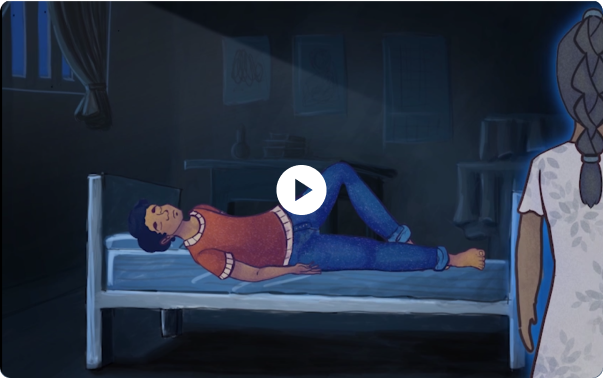Stage 1: Deeply entrenched social norms and expectations
Women’s journeys are often set in motion early in their lives - commonly much earlier than women themselves might realise or acknowledge. Sometimes it’s as early as when their parents are told they’re having a girl. Stage 1 focuses on the social networks and systems into which women are born (e.g. their family) and those they experience across their life course (e.g. education, marriage, work, economy, laws). Deeply entrenched social norms and expectations often underpin all of their life experiences, and lay the foundations for what is to come.
Examples:
- Unequal access to education opportunities
- Pressure to marry and have children
- Economic dependence on others
- Exposure to (all forms of) abuse
Stage 2: Burdens of responsibility
The demands placed on women and girls often differ to those placed on men and boys. Stage 2 highlights the burdens of responsibility, which women are frequently expected to carry. They often have multiple and competing demands placed upon them, which tend to increase over time, from childhood through older age.
Examples:
- Household chores
- Caring for and supporting dependent persons
- Managing economic hardship
- Responsibility for family planning
Stage 3: Pressure to tolerate
No matter what adverse conditions women face, it is generally frowned upon if they are seen to be unable to cope or unable to support others. Stage 3 focuses on the strong cultural expectations for women to tolerate in silence whatever is thrown at them, at all costs.
Examples:
- Expectations to tolerate infidelity, violence, poor employment conditions, partner’s substance misuse, etc.
Stage 4: Coping strategies
Women frequently trial numerous strategies to try to reduce their personal difficulties. The strategies available to them may be restricted: by not knowing their rights; by accepting what is considered socially appropriate; by what support networks they are aware of/are available. For example, if a woman is unaware marital rape is wrong, they won’t report it. If it is illegal, but unenforced, no action will be taken by authorities and a woman may end up in a more harmful situation than before.
Stage 4 can go on for decades. Even when it looks like a woman is ‘doing nothing’ that may be a conscious decision or strategy to avoid harmful repercussions.
Strategies have commonly focused around:
- Taking action to try to reduce economic hardship
- Changing behaviour to reduce violence and mistreatment from others
- Hiding their emotions
Stage 5: Tipping point
Women reach their threshold for tolerance and feel unable to endure their situation any longer. They feel that they have tried and exhausted strategies available to them. At this stage, there is a trigger (either a single incident or multiple pressures) that makes women feel like they are losing their battle. This is a crucial stage where women may express to others that they are unable to cope or may call a helpline.
At Stage 5, women need to be able to see viable strategies to prevent them progressing to the next stage. It is rare for a woman not to communicate in some way that she is seriously struggling.
Stage 6: Heightened emotions
Preceding self-harm, women commonly experience at least one of eight intense emotional states, which directly influence their decision to act. The single strongest emotion reported by surviving women is “anger”. With anger and other emotions often running high, and in the perceived absence of other options, we see women choose to use self-harm.
Emotions experienced prior to self-harm:
- Anger
- Feeling physically, mentally and/or culturally trapped
- Feeling emotions have been invalidated or dismissed
- Loneliness and isolation
- Self-blame
- Depression and sadness
- Disappointment
- More rarely, symptoms of severe psychiatric disorders
Stage 7: Change through self-harm
By Stage 7, women see self-harm as the only or best option left to change their situation and may believe that others will be better off without them. Women seek change in different ways: sometimes to die; to transform into a spiritual state (e.g. a star in the sky guiding loved ones); or to get others to acknowledge the struggles they are facing, to change the way they treat them, or provide additional support.
Regardless of the outcome of self-harm, whether a woman dies or survives, the impacts of her actions continue:
- Survivors often continue to face the same struggles, in addition to acquiring shame and judgement linked to self-harm. Support for survivors of self-harm is crucial to prevent further events.
- For the deceased, self-harm can influence how a woman is remembered and spoken about, and has a detrimental impact on any children left behind. Ongoing support for the family of the deceased is vital.









